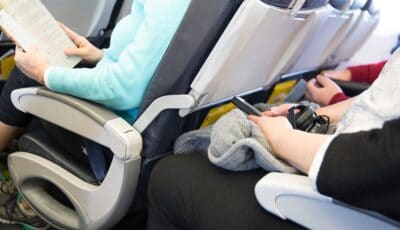Overweight Airline Passengers matter.
An advocate for those flying in the back of the plane in the United States, known as regular economy class, FlyersRights.org submitted its Petition for Reconsideration to the FAA, requesting the Federal Aviation Administration FAA reconsider its April denial of its minimum seat size rulemaking petition.
This seat regulation petition asked the FAA to set 9 minimum seat sizes that would meet the safety and health needs of at least 90% of Americans.
Not only Americans are upset about airlines trying hard to fit more passengers in sold-out aircraft. Many even not overweight passengers visiting the United States are beyond belief about the size of airline seats in the land of the free.
The FAA Reauthorization Act of 2018 would also be met by this kind of rule.
The FAA turned down the plea in April 2023, saying that minimum seat guidelines are not needed for safety at this time.
The FAA pointed to a study by the Emergency Evacuation Standards Aviation Rulemaking Committee (ARC) that said emergency evacuations are safe in general.
The FAA also said that deep vein thrombosis happens with all long-distance travel, not just flying.
Do flyers have rights?
Paul Hudson, President of FlyersRights.org and a member of the FAA’s Emergency Evacuation Standards ARC, said, “The FAA again refuses to follow Congress’s clear order to set minimum seat size standards. The FAA has put off making rules for almost 5 years and has changed the rules of the game.
By using a general comment from the Emergency Evacuation Standards ARC, which wasn’t even allowed to think about seat size, the FAA explains why it won’t do anything about seat size to protect the safety and health of passengers.
Hudson came to the following conclusion:
“As we saw with the flawed approval of the Boeing 737 MAX, the FAA again wants to shield the industry from the costs of necessary safety regulations and refuses to look at the safety threat made by multiple, changing factors.
In 2020, the DOT Inspector General brought up a lot of problems with the FAA’s behavior, which is the basis for the FAA’s rules, beliefs, and findings.























